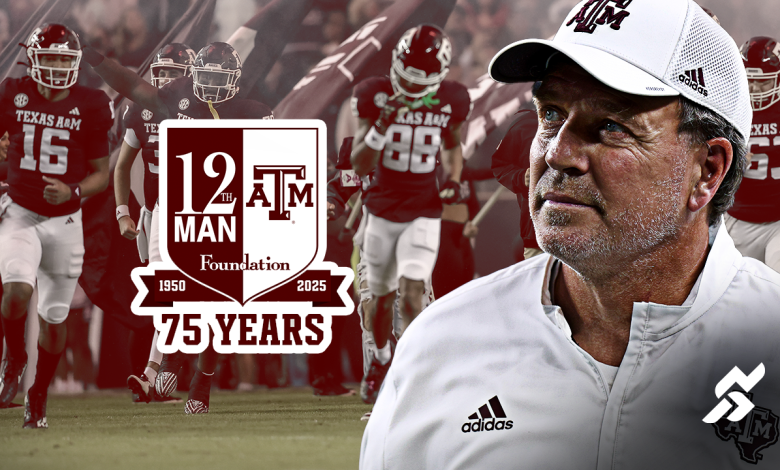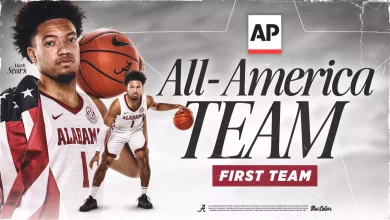Texas A&M’s 12th Man Foundation Faces Revenue Decline Following Costly Jimbo Fisher Buyout.

The fallout from Jimbo Fisher’s high-profile buyout is beginning to show its financial impact—most notably in the declining revenue of Texas A&M’s 12th Man Foundation. Once a symbol of relentless fundraising power and one of the most successful athletic booster organizations in the country, the 12th Man Foundation now faces mounting financial pressures in the wake of a turbulent period in Aggies football.
Fisher’s buyout—reportedly totaling a staggering $76 million, the largest in college football history—was meant to signal a fresh start for Texas A&M. But while the program turns the page on the field, the effects off the field are proving more complicated, particularly for the foundation that supports much of the athletics department’s financial backbone.
Understanding the 12th Man Foundation
The 12th Man Foundation serves as the primary fundraising arm for Texas A&M Athletics, responsible for generating millions in revenue through donor contributions, ticket sales, endowments, and capital campaigns. Established to ensure Texas A&M remains competitive in the ever-evolving college athletics landscape, the foundation has long prided itself on its ability to rally Aggies supporters and fund ambitious projects, including facility upgrades, scholarships, and coaching salaries.
In recent years, the foundation played a central role in positioning Texas A&M as a major contender in college football, helping to bankroll Jimbo Fisher’s massive contract, support recruitment efforts, and improve athletic facilities. But now, as the financial demands of Fisher’s buyout collide with donor fatigue and economic uncertainty, the 12th Man Foundation is experiencing one of its most challenging stretches in recent memory.
The Financial Toll of the Buyout
When Texas A&M fired Jimbo Fisher in November 2023, it wasn’t just a coaching change—it was a financial earthquake. Fisher’s contract, originally signed in 2017 and later extended, included a fully guaranteed payout, meaning that no matter the circumstances of his dismissal, the university was on the hook for every remaining dollar.
The result? A payout of approximately $76 million, with over $19 million due within 60 days and the remainder to be paid out in annual installments of roughly $7 million through 2031. That kind of financial obligation doesn’t exist in a vacuum—it ripples through the entire athletics department, and the 12th Man Foundation has found itself squarely in the blast radius.
Although Texas A&M officials initially stated that the buyout would be funded through private donations, primarily from boosters and athletic department reserves, it quickly became evident that securing those funds would be a delicate task. Some major donors reportedly expressed hesitancy about continuing to contribute at previous levels, and others sought more transparency regarding how their money was being used.
Donor Fatigue and Shifting Priorities
One of the most pressing concerns for the 12th Man Foundation is donor fatigue. After years of aggressive fundraising for high-profile coaching hires, stadium renovations, and football infrastructure, many long-time supporters are beginning to feel tapped out.
The Fisher buyout, in particular, has become a flashpoint for frustration. Some donors question the stewardship of their contributions, especially given that Fisher’s results—outside of a standout 2020 season—fell short of expectations. The optics of paying a coach tens of millions of dollars not to work, while simultaneously asking fans for additional donations, haven’t helped build goodwill.
Additionally, Texas A&M isn’t immune to the broader economic environment. Inflation, market uncertainty, and a shifting landscape in college athletics (including Name, Image, and Likeness (NIL) concerns) have led many supporters to re-evaluate their giving priorities. Some are now directing their funds to NIL collectives or athlete-specific initiatives rather than traditional booster foundations like the 12th Man.
The Numbers Behind the Decline
While official revenue numbers for the current fiscal year have yet to be fully released, early reports indicate that donations to the 12th Man Foundation have dipped considerably compared to previous years. In fiscal year 2022, the foundation raised more than $80 million, one of the highest totals among all NCAA programs. But internal projections for FY2024 suggest a notable drop, potentially in the range of 15–25%, according to sources familiar with the foundation’s finances.
Key revenue streams such as annual fund contributions, season ticket renewals, and premium seating sales are all reportedly trending downward. Some of the foundation’s largest donors have reduced their giving or placed pledges on hold, waiting to see how the university’s football program recovers from the Fisher era.
If this trend continues, it could have serious implications for Texas A&M Athletics, including:
- Delays or deferrals in capital improvement projects
- Reductions in scholarship endowments or operational support
- Increased pressure to shift funding toward NIL efforts
- A reevaluation of fundraising strategy and leadership priorities
Public Perception and Transparency
One recurring theme among both critics and supporters is a call for increased transparency. While major athletic programs often operate in a semi-private sphere, the scale of Fisher’s buyout and the subsequent budget pressures have created a wave of public scrutiny.
Some fans have taken to message boards and social media to express concern over how donations are being used. Others have raised questions about the decision-making process that led to Fisher’s contract extension in the first place—a move that significantly increased the financial burden of his eventual buyout.
The 12th Man Foundation has tried to remain focused on its long-term mission, but it now faces a difficult balancing act: reassure its donor base, maintain financial health, and support a football program still in transition—all while restoring confidence in how it operates and spends its money.
A Path Forward: Recovery and Rebuilding
Despite the current downturn, the 12th Man Foundation is far from irreparably damaged. Texas A&M boasts one of the most passionate fan bases in the country, and the university’s resources, alumni network, and athletics tradition provide a strong foundation for recovery.
However, the foundation’s leadership recognizes that the old model may need to evolve. In response to the downturn, the 12th Man Foundation is expected to:
- Revamp its donor outreach strategies, focusing on transparency and clearly outlining how donor dollars are being used.
- Align more closely with NIL initiatives, potentially partnering with collectives to ensure coordinated fundraising that benefits both athletes and the athletic department.
- Broaden its donor base, targeting younger alumni and smaller donors who can contribute consistently, even if at lower amounts.
- Rethink capital campaigns, putting a pause on large-scale building projects in favor of sustainable, program-focused investments.
- Promote new leadership under head coach Mike Elko, who took over after Fisher’s departure and brings a renewed sense of discipline and direction to the football program.
Mike Elko’s Role in Stabilizing the Program
The hiring of Mike Elko, a former Texas A&M defensive coordinator and head coach at Duke, is seen as a stabilizing move for the football program—and by extension, for the 12th Man Foundation. Elko is respected for his coaching acumen, his integrity, and his ability to build a strong team culture without the flash (or financial demands) of his predecessor.
If Elko can deliver competitive results on the field, it could help reignite donor enthusiasm and re-establish the sense of optimism that fueled past fundraising surges. Winning, as always, cures many ills, and a turnaround under Elko would go a long way toward restoring faith in the program’s direction.
The 12th Man Foundation has long been the financial engine powering Texas A&M Athletics, but the fallout from Jimbo Fisher’s historic buyout has brought it to a challenging crossroads. Declining revenue, donor fatigue, and growing scrutiny have placed significant pressure on the organization to adapt and evolve.
Still, the Aggies’ fan base is passionate and resilient. If the foundation can adjust its strategy, embrace transparency, and work in concert with university leadership and the new football regime, there is a clear path to recovery. The coming years will determine whether Texas A&M can rebound financially—and whether the 12th Man Foundation can continue to live up to its name, standing strong behind Aggie Athletics as its most loyal and vital supporter.









